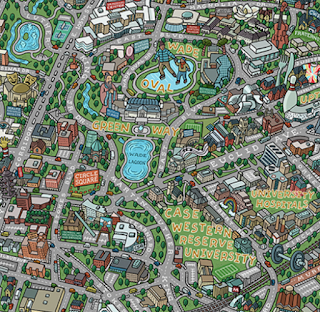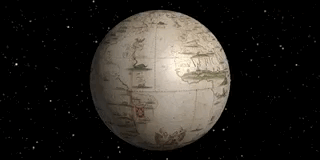Guerilla Cartography is an organization that uses creative and artistic mapmaking to foster collaborative knowledge and promote cooperative ideas towards today's major problems. They created an excellent food atlas. Their second one,
Water: An Atlas is being printed and should be ready to ship by the end of November. You can pre-order a copy
here. They were nice enough to send me some sample pages. Here are a few details from some of the maps.
The map above is from a page titled "Water Availability for Food Security in African Cities" It looks at the challenges of a rapidly growing and urbanizing continent. City dots are sized by population and major cities have an outer circle divided into three colored sections indicating whether water and wastewater are separated and whether the city has a master plan for managing each.
There is also a diagram of the water cycle and a graph running diagonally down the page showing the availability of improved water (dark blue) wastewater treated (gray) and water consumption (the bars underneath) in daily liters per person.
Here is a small version of the page to show how these graphics fit together.
Another map was a commission from the Scotland Environmental Arts Festival by Andrew McAvoy showing the area with a focus on the water courses.
The hand drawn map is presented at three different scales. Above is the larger Southern Uplands region, while below is a detail around Morton Castle, the festival site with suggested exploring routes.
More maps and photos from the festival can be seen
here.
Finally, "Pink Salt Lakes" maps out water bodies that are colored pink due to two types of reddish algae.
The map has a kind of checkerboard pattern with pictures of some of the lakes interspersed. Below is a picture from California's South Bay Salt Ponds-I once flew over these and wondered why they looked so weird.
Australia has many pink lakes including one named Pink Lake.


















































